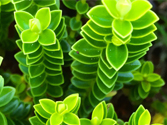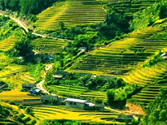Our planet is in the grip of a plague of plastic waste. Researchers estimate that more than 8.3 billion tons of plastic have been produced worldwide since the early 1950s. About 60 percent of the plastic ends up in landfills or natural environments.
The utility of plastics cannot be denied, especially in the fields of medicine and food preservation. However, the problem is that in many cases, the use of plastics is unnecessary, especially the current disposable products are popular, there is a strong tendency to replace reusable goods. The problem is particularly acute given that only 9% of plastic waste is recycled.
Most of the discarded plastics enter the natural environment, damaging the ecosystem and harming wildlife. While traditional tools such as metals and glass should be picked up again, these new materials can also help us get rid of our dependence on plastics as environmentally friendly materials come on the market.
The United Nations environment programme's latest report examines the various plastic alternatives currently being developed. Here we present a selection of them.
1. Produce environmental protection material with mushroom and farm fertilizer: Mycofoam
Mycofoam was developed by a company called Ecovative as an alternative to foamed polystyrene (EPS). Foamed polystyrene, commonly known as "foamed plastics", is the preferred material for protecting products during shipping, especially food and electronic products. Mycofoam is made from farm waste. It is mixed with mycelium and put into the model. The material will grow into the final desired shape according to the mold, then dry and be used as a stable packaging material.
With traditional foam plastics, the material has impact resistance, can also be molded into various shapes in order to meet customer demand, it is made from renewable resources, nature can be biodegradable. Some companies, including dell computer, have used it to replace styrofoam, which produces 94 per cent of their production lines "zero waste" using Mycofoam.
2.Make textiles from milk
Anke Domaske, a fashion designer and microbiologist, makes fiber from milk in his studio in Hanover. Domaske has made her personal fashion career out of milk that does not meet hygienic standards by distilling milk protein fibers and spinning them into milk yarns. She says milk fiber contains 18 amino acids that are good for health. For every skirt she makes, she needs six liters of milk.
In fact, milk has been used to make plastics since the beginning of the 20th century. Early plastics manufacturers used chemically intensive processes to extract casein from milk, which they then used to make buttons and synthetic fabrics. But the process quickly fell out of favor after new petroleum-based plastics were developed.
Since 2011, Anke Domaske, a German entrepreneur, and her company, QMilch, have been using improved forms of the technology to create sustainable textile fibers from milk that would otherwise be wasted. Domaske simplifies the old process to make the plastic, and opened a way to use fewer chemicals, produce a creature with versatile and durable polymers, especially suitable for the garment industry. Moreover, since her company buys milk from producers that would otherwise be dumped, the entire supply chain is good for the environment.
3.A leather substitute made from pineapple fiber: Pinatex
Although leather is versatile and versatile, not everyone wears it under certain conditions, whether for moral, environmental or economic reasons. Synthetic leather has long been a cheaper alternative to manufactured leather, but the process of making synthetic leather from fabric and plastic is not sustainable. Pinatex, produced by london-based Ananas Anam, USES pineapple leaves to create an environmentally friendly and durable alternative.
No additional resources are required, just a large collection of pineapple leaves from pineapple plantations. The process is consistent with a sustainable circular supply chain and provides farmers with additional income. In the season of harvest, harvest after the pineapple, the Philippines will collect the agricultural community abandoned the leaves, and extract the fiber, then processed into mesh, sent to the factory to finalize the design of Spain. The final product will be shipped directly to designers and manufacturers who are already using Pinatex to make shoes, bags and furniture.
4.Edible cutlery
A key strategy to stop the flow of plastic into the environment is to curb our consumption of disposable products. This is especially true in the food and beverage industry, where the use of plastic dishes, straws and cutlery has increased significantly in recent decades.
Enter Bakeys is an Indian company founded in 2010. It developed out of a simple and disruptive to eat spoon instead of plastic tableware, its main raw material is sorghum flour, it is in South Asia, Africa and Central America widely planted, resources efficiency and extremely strong adaptability of crops. Spoons are durable, edible and come in three flavors: original, sweet and salty. Although currently listed only in India, the company is working to increase production and start competing with plastic tableware.
5.Biodegradable tableware made from palm leaves
Food served with plant leaves has a long history in communities around the world. Although this kind of food consumption in existence and prosperity in human history, but disposable plastic tray and strong plastic bowl into the world of people, changed the habit of people use natural resources. To reverse this trend, several companies are using old technology to create new, environmentally friendly disposable dishes and bowls.
One is Leaf Republic, a germany-based start-up that makes food packaging using traditional Indian pallets. Their plates and containers are stitched together with leaves, pressed and then dried, replacing the clam shell plastic packaging used in restaurants.
Little Cherry is another company promoting sustainable and profitable plastic alternatives. The uk-based company sells party gear made from betel leaves. Although the materials used are different, both examples show how to reuse traditional materials sustainably in the 21st century.







